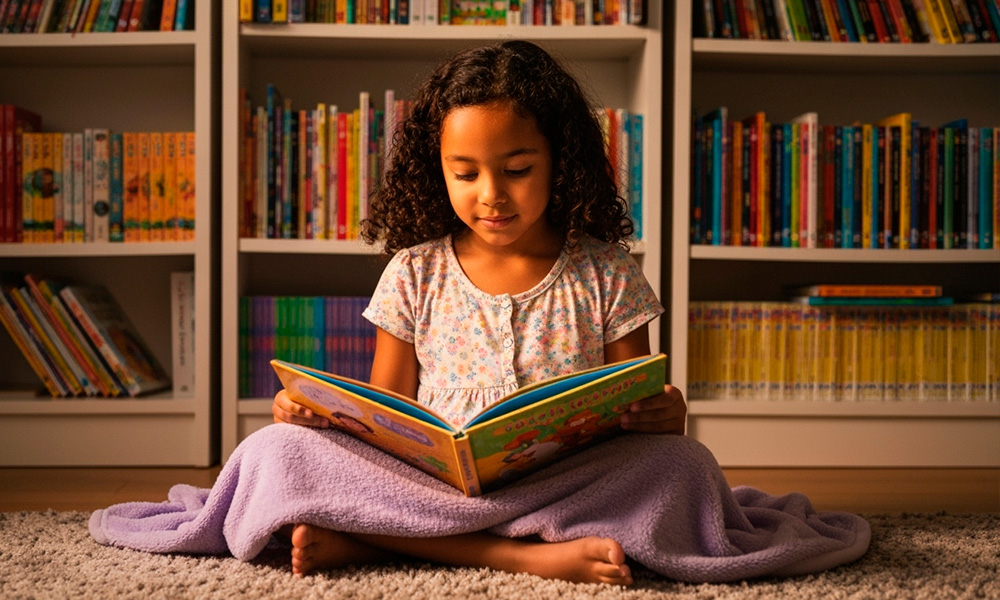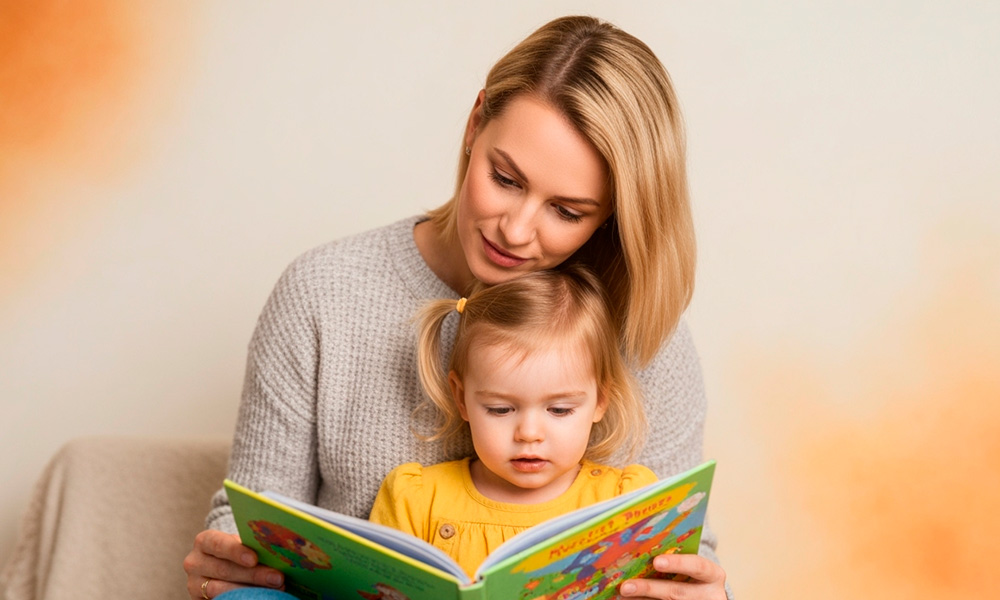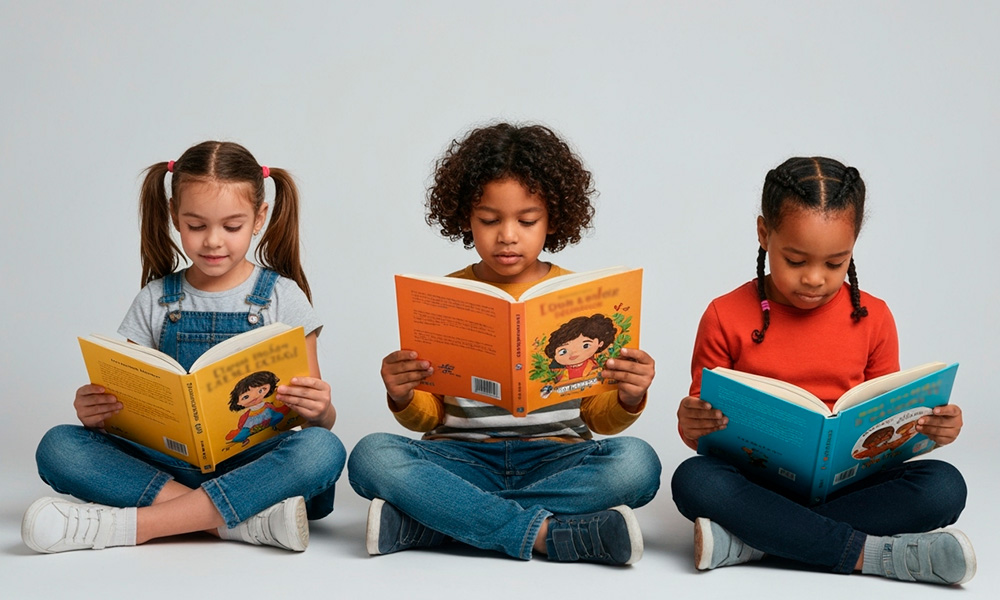There are few things more magical than watching a child’s eyes light up as they dive into a new story. A book can be a rocket ship to a distant galaxy, a key to a secret garden, or a mirror showing them just how brave they can be.
But as a parent, navigating the endless shelves of a bookstore or the vast digital landscape of online shops can be overwhelming. How do you find that perfect book—one that’s not too simple, not too challenging, but just right for their developmental stage?
At Fableau, we believe that the right book at the right time can ignite a lifelong love of reading. This guide will help you confidently choose age-appropriate books that not only educate your child but also make reading an adventure they’ll beg for every night.
Why Age-Appropriateness Matters
Choosing a book that aligns with your child’s age is about more than just their ability to read words. It’s about matching their:
- Cognitive Development: Can they follow the plot and understand the themes?
- Attention Span: Is the story short and punchy enough for a toddler or complex enough for a chapter-book champion?
- Emotional Maturity: Does the story address concepts they can relate to, like friendship, sharing, or courage?
When a book is a perfect fit, it builds confidence, improves comprehension, and turns reading from a chore into a joy.
The Breakdown: Finding the Perfect Book by Age
Let’s explore the wonderful world of reading, one developmental stage at a time.
Ages 2-3: The Tactile Toddler
At this age, children are experiencing a language explosion! They are learning new words every day and discovering the world through their senses. Books are not just stories; they are objects to be touched, held, and explored.
What to Look For:
- Durability: Sturdy board books are a must to withstand enthusiastic page-turning (and the occasional chewing!).
- Simple, Rhythmic Text: Look for books with repetition, rhymes, and predictable patterns. This helps build foundational language skills.
- Bold, Clear Illustrations: Bright, high-contrast images that clearly depict objects and actions are key. Help them point to and name what they see: “Where is the big, red ball?”
- Interactive Elements: Lift-the-flap, touch-and-feel textures, and sound buttons make reading a multi-sensory experience.
- Topics: Books about daily routines (bedtime, meals), animals, colours, and simple feelings are perfect.
Ages 4-6: The Curious Preschooler & Early Reader
Welcome to the age of “why?” Preschoolers are developing a greater understanding of story structure (beginning, middle, end) and are starting to grasp more complex emotions and social situations. Many are also beginning to recognize letters and sight words.
What to Look For:
- Engaging Plots: Stories with a clear problem and a satisfying solution will hold their attention. Think of tales about friendship, starting school, or overcoming a small fear.
- Relatable Characters: Children love to see characters who look and feel like them, navigating familiar challenges.
- Rich Picture Books: Look for detailed illustrations that add depth to the story. These visuals are crucial for comprehension before they can read all the words themselves.
- Early Readers (Level 1): If they are showing interest, introduce books with simple, repetitive sentences and strong picture clues to help them decode words.
- Topics: Humorous stories, gentle adventures, books about family and community, and introductory non-fiction (like dinosaurs or space) are big hits.
Ages 7-10: The Independent Reader
This is where the magic really takes off! Children in this age group are transitioning from learning to read to reading to learn. They are developing their own unique tastes and can follow more complex plots with multiple characters and subplots.
What to Look For:
- Early Chapter Books: Bridge the gap between picture books and novels with books featuring larger text, illustrations on every few pages, and manageable chapters.
- Book Series: Getting hooked on a series is a fantastic way to keep children reading. Familiar characters and worlds make it easy to pick up the next book.
- Diverse Genres: Introduce them to fantasy, mystery, realistic fiction, and humor. This is also a great age for engaging non-fiction books about their passions, whether it’s coding, ancient Egypt, or marine biology.
- Character Development: Look for stories where the characters learn, grow, and face moral dilemmas. These books provide excellent opportunities for conversations about empathy, resilience, and making good choices.
- Topics: Let their interests lead the way! Whatever they are obsessed with, there is a book about it.
The Fableau Secret: Making Your Child the Hero
While following these guidelines will help you find wonderful books, there’s one secret ingredient that can turn any reading session into an unforgettable experience: personalization.
When a child sees their own name in print and recognizes themselves in the illustrations, a book is no longer just a story—it becomes their story.
This is the magic we create at Fableau.
- Boosts Engagement Instantly: For the toddler learning their name or the preschooler who loves being the center of attention, seeing themselves as the main character makes them an active participant in the narrative.
- Builds Self-Esteem: A personalized book sends a powerful message: “You are important. You are a hero. Your story is worth telling.” This is incredibly affirming for developing minds.
- Improves Reading Comprehension: Studies show that personalization helps children connect more deeply with the text, leading to better focus and understanding.
Ready to Create a Story They’ll Never Forget?
Choosing the right book is an act of love. It’s about knowing your child, sharing a moment, and opening a door to a universe of possibilities. Use this guide to find amazing stories, and when you’re ready to make reading truly personal and magical, we’re here to help.









